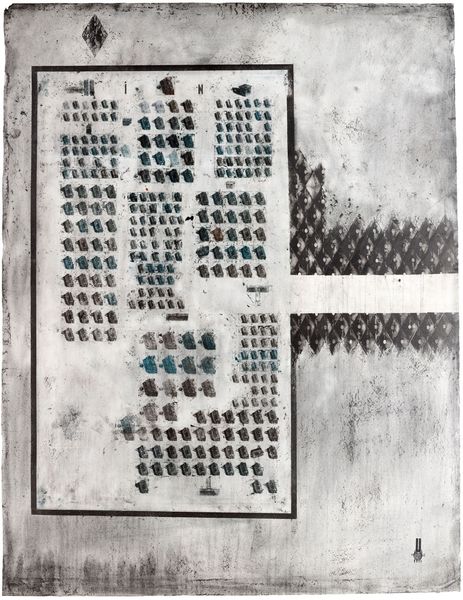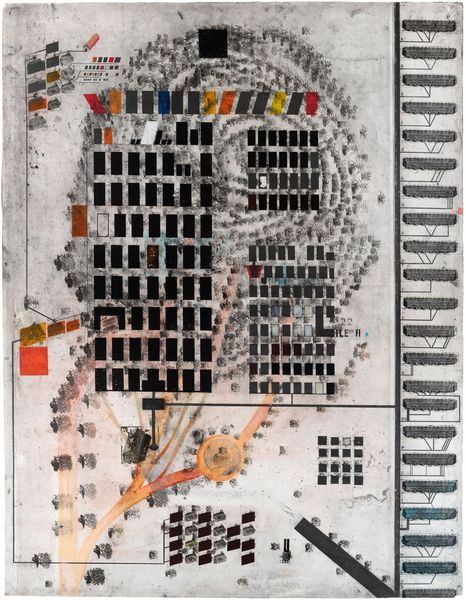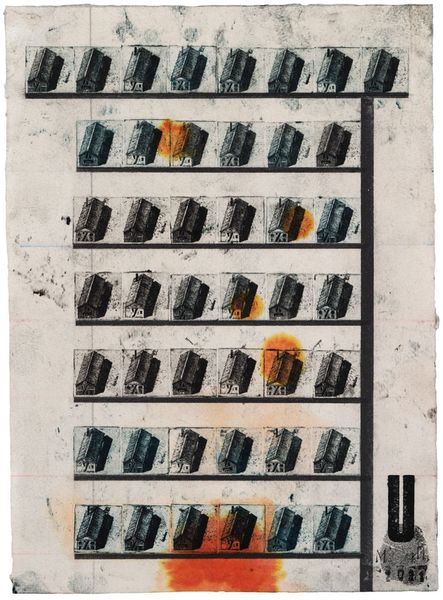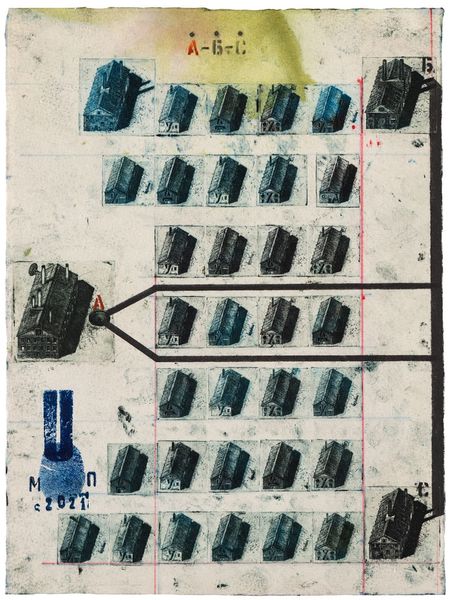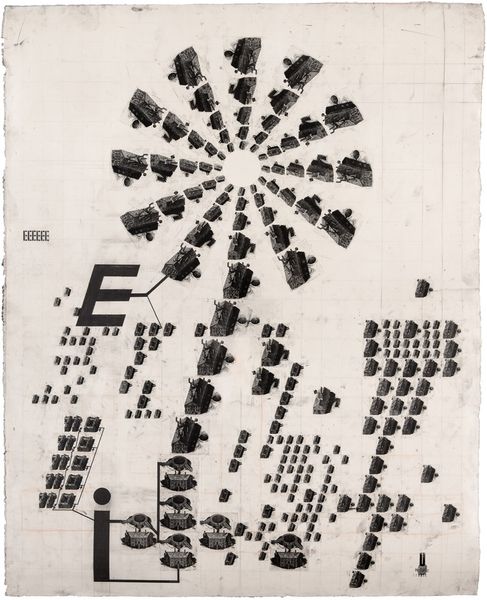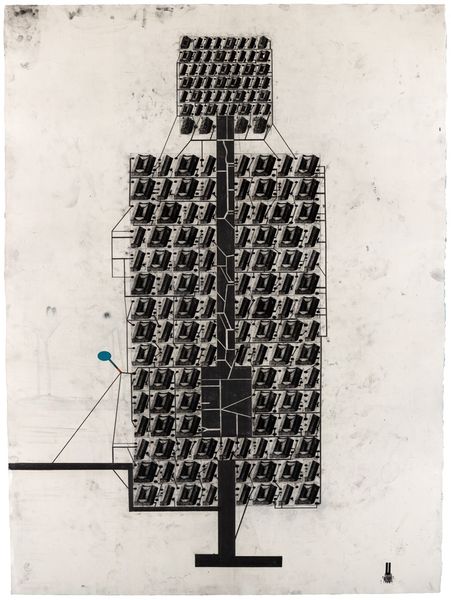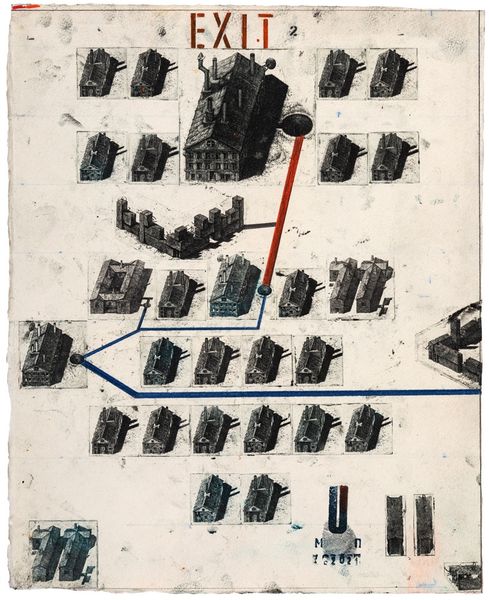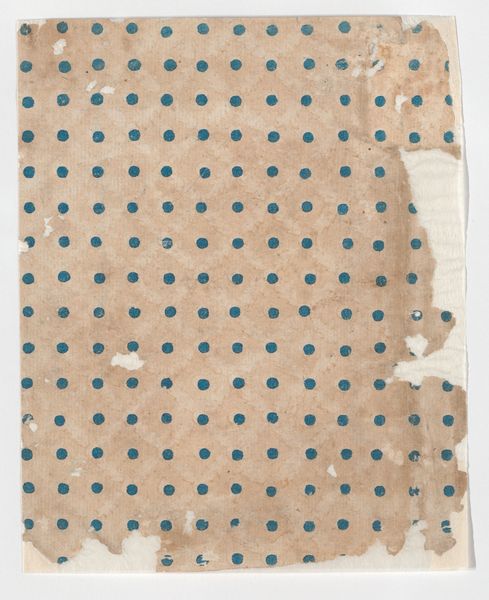
drawing, mixed-media, paper, ink
#
drawing
#
mixed-media
#
contemporary
#
paper
#
ink
#
geometric
#
mixed medium
#
mixed media
#
watercolor
Dimensions: 112 x 65 cm
Copyright: Pavlo Makov,Fair Use
Curator: Looking at "NI (a fragment of the text from Abracadabra)" by Pavlo Makov from 2020, what strikes you most about this mixed-media piece on paper? Editor: Initially, the density and repetition create a slightly unsettling feeling, almost like an inventory or a schematic gone awry. The individual elements seem like abstracted forms of some functional object. Curator: Yes, the repeating motif certainly invokes the idea of systems and language. Makov’s work often explores themes of urban planning and societal structures. These can become codes of power. The use of 'NI' from 'Abracadabra' adds another layer. Abracadabra originally served as an amulet, offering protection against illness; 'NI' meaning 'I am created'. The original amulet was ordered to be written repeatedly to lose a letter each row from top to bottom, similar to the arrangement displayed. This reflects on ideas of health and its structures and meanings to those afflicted. Editor: Intriguing. I am definitely seeing the magic roots of "Abracadabra" as protection through that diminishing arrangement! Looking closer, the forms themselves remind me of architectural components, perhaps fragments of buildings or city blocks and these forms' connection to the letters. The palette is muted, almost melancholic, dominated by grays and blues. Are there historical precedents influencing the somber tone? Curator: Well, the post-Soviet experience and the socio-political changes in Ukraine definitely inform his artistic vision. Makov is a cultural figure known for work criticizing oppressive social systems, usually those left by Soviet urban planning and thought. One is made to be lost in structures such as apartment buildings, similar to the forms pictured. So I imagine his palette stems from his critique. I mean, you are drawn to these small differences between units that feel representative of individuality and freedom despite larger overarching schemes that force social structures that hinder these characteristics. Editor: Yes, it's precisely the tension between the rigid structure and the subtle variations that I find compelling. Each component seems trapped within its own designated space, yet there's an attempt at differentiation. There's also this idea of memory inscribed within form: a collective memory of Soviet life perhaps but fragmented, reconfigured into a new, potent visual language. Curator: Absolutely. In a sense, he's dissecting and reassembling symbols of a bygone era to understand their lasting impact on the present. Thinking about the use of "NI", he uses visual metaphor and this text to discuss personal existence amid historical processes. Very moving. Editor: Indeed. After our discussion, I will see those little units of identity as complex and not mundane.
Comments
No comments
Be the first to comment and join the conversation on the ultimate creative platform.
